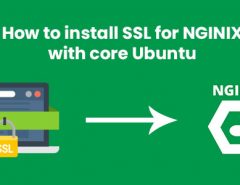SSH or Secure Shell is a way to manage a dedicated server remotely by using integrated Linux terminal. It doesn’t have a typical Web Hosting Control Panel GUI(Graphic User Interface) like cPanel, text commands carry out all the actions.
SSH is like a command line interpreter such as Command Prompt present in majority Windows distributions.
It has an advantage of direct access of server by user with a secured access environment.
Its command names are similar to the being actions performed. For example, to delete a file, “rm” command is used with a filename where “rm” means remove. For new folder creation, “mkdir” is used which means make a directory.
Some more commands to help you personalize your server are:
- “man” command means manual which is followed by any other Linux command ( like cd) and it displays complete description with all the options available.
- “cd” which means ‘change directory’ helps in browsing between different folders of your server.
- “cp” and “mv” are commands used for basic file management to copy(cp) and move(mv) files/folders from your server.
- “grep” is used to print lines that match a particular pattern and helps in looking for a line/phrase in a large text file like logs.
- “ls” allows you to enlist the content of a directory and “ls -la” is used to view hidden files/directories (ones that begin with a dot) and additional attributes like permissions and ownership.
- “chown” is used in changing user and group ownership and “chmod” helps in changing permissions (read, write, execute) for the owner, group and other users accessing that file/directory.
- “nano” and “vi” are 2 Linux text editors; “nano” is easier to use, while “vi” is a preferred editor for experienced ones.
- “top” gives a periodic update (within every five seconds by default) of running Linux tasks and “ps” clicks a snapshot of all processes currently going on and then prints them on your screen.
- “df -h” gives current overall disk usage in gigabytes and “du -hs” calculates total directory size in a human readable format (e.g., 1K 234M 2G).
- “find” and “locate” commands are used to locate files. “locate“, however uses an indexed database but for much faster and comprehensible file search, “locate -u” will be used to periodically update new files on database.



Leave a Reply